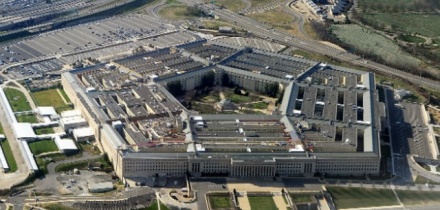
The last time that the Department of Defense (DoD) attempted to overhaul its personnel management system, it was a complete disaster. The National Security Personnel System (NSPS), created during the Bush Administration, was the DoD’s attempt to overhaul personnel management systems. However, NSPS was primarily designed to abolish Defense employees’ workplace rights, including the fundamental rights to appeal adverse actions and bargain collectively. In essence, NSPS was a thinly-veiled attempt to eliminate federal employee unions under the pretense of modernization and in the name of national security.
NSPS was short-lived, though. Not long after NSPS was enacted, the more than 200,000 DoD employees effected discovered serious flaws with promised workplace flexibilities. Defense employees covered by by NSPS, the vast majority of whom did not have Union protection, found themselves vulnerable to discipline or firing without a fair appeals system. Effected employees were at the mercy of their supervisor.
Aside from the unfettered power grab, DoD managers and executives were able to line their pockets with increased pay and egregious bonuses. All the while, rank-and-file DoD employees saw little to no monetary benefit. The system was rigged, and it did not take long for Congress to come to this conclusion as well. In the 2010 National Defense Authorization Act, lawmakers prudently repealed NSPS.
However, Congress repealed NSPS with a major caveat: For DoD to create a performance appraisal system that was “fair, credible, and transparent.” Since the repeal of NSPS, NFFE has diligently worked with DoD and our Labor allies to ensure the new system’s compliance with Congress’ request.
In the post-NSPS era, DoD has proven to be far more collaborative as it moves toward reforming its personnel management system. Thus far, DoD has engaged NFFE and the IAM, among other Unions, as well as numerous other stakeholders in the design of a new personnel management system.
Pete Randazzo, President of NFFE Local 1690 in Monterrey, Calif., who represents NFFE in the pre-decisional collaboration with DoD, says that the agency has engaged a wide array of stakeholders.
“This has been a very collaborative effort,” said Randazzo. “The process has been unprecedented.”
Randazzo has also served as the labor co-lead on the performance management design team, which was specifically tasked with researching and developing recommendations for DoD’s new performance management system.
“By involving the unions in planning, DoD benefited from having a broad scope of DoD employees in the room – workers from different departments, areas of the country, grade level, blue collar and white collar; all kinds of Defense workers were included and involved in developing the new system,” said Randazzo. “That is going to pay off down the road. If management didn’t include the workers, there could have been the appearance that DoD was out of touch with what is important for front-line employees. That would have been a real problem.”
(See also, Randazzo’s interview with Government Executive)
While much work has been done thus far, it is still unclear as to when DoD will introduce their new personnel management system. According to a recent report to Congress, the Pentagon stated, “The Department continues to make considerable progress on the personnel authorities.”The report remains mum on development timetables.
As the Pentagon finalizes its new personnel management system and moves towards implementation, NFFE will play a significant role every step of the way.
“As DoD continues to solidify their plans for the design and implementation of personnel management reform, NFFE will make sure the concerns of NFFE-IAM members are heard,” said NFFE National President William Dougan. “Getting to this point has been a long journey, but we are moving in the right direction. The goodwill cooperation DoD has expressed thus far is encouraging. While NFFE and DoD may have disagreements over some provisions, there is room for common ground on personnel management reform. This progress demonstrates how an effective labor-management partnership should operate. So long as DoD remains open and transparent in their deliberations, NFFE will remain at the table.”
NFFE will keep NFFE-IAM members informed of the progress made in the DoD overhaul of its personnel management system.

